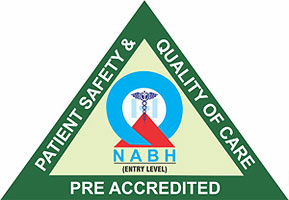+91-7291089674 (Bandra)
+91-7291092120 (Kandivali)




January 13, 2023 | Author: Admin
January is Glaucoma Awareness Month, making it the perfect time to talk about how to spread the word about this condition that can cause blindness. Early detection of glaucoma is necessary for receiving proper treatment.
Alarming key facts about glaucoma:
Glaucoma is a group of eye conditions that damage your optic nerve and is usually caused when fluid builds up in the front part of your eye. This increased fluid exerts pressure on the optic nerveswhich can permanently affect eyesight if not diagnosed in time and treated. It is also noticed that some people have normal eye pressure but still get glaucoma. Untreated or poorly managed glaucoma can cause blindness and irreversible vision loss, which makes it the second most common cause of blindness worldwide.
Aqueous humor is the fluid inside your eye, normally flows out of the eye through a channel. The liquid might build up if this channel gets blocked or if the eye is producing too much fluid, leading to a rise in pressure inside the eye and thus damaging the optic nerve.
There are various types of glaucoma, such as:
This is the most common type that happens when resistance builds up in the eye’s drainage canals. Because most people don’t have symptoms, the condition may go unnoticed for years.
This is a rare type of glaucomathat often manifests suddenly. It happens when the angle between your iris and cornea is too small. It might happen if the pupil changes and dilates too quickly. This restricts the flow of aqueous fluid out of your eye and blocks your drainage canals, increasing eye pressure. Eye pain and headaches are two symptoms that can be very severe and need immediate medical attention.
Even in the few cases where eye pressure is normal or not too high, optic nerve damage occurs.
Some babies are born with improperly formed drainage canals from the womb. Your baby’s glaucoma symptoms may be visible to your doctor from birth, or symptoms may become noticeable in childhood.
Some forms of glaucoma don’t have any early warning symptoms, and vision problems might occur gradually, making it easy to miss the symptoms. Regular eye examinations are crucial for catching this disease in its earliest stages. Since glaucoma damage is irreversible, early detection and treatment are essential to prevent blindness.
You might experience:
If you encounter these symptoms, you should get immediate medical attention.
Several significant risk factors have been found, which include:
It’s possible that you have glaucoma and may not even be aware of it. For the purpose of detecting glaucoma or other eye issues, routine eye exams are important. The eye exams can assess your optic health and vision loss.
An eye specialist may do one or more of these tests to check for glaucoma:
Glaucoma, if left untreated, can lead to the faster development of permanent blindness or permanent vision loss. Treatments can slow down additional eyesight loss, but they cannot restore the lost vision. If you experience eye pain, severe headaches, or vision issues, it’s crucial to see an eye specialist as soon as possible.
Glaucoma can be treated with a variety of prescription eye drops.
Your eye specialist uses a laser to enhance fluid outflow from your eye, and they might advise using lasers as a first-line treatment in place of or in addition to eye drops.
Surgery is another method to lower ocular pressure. As compared to drops or lasers, it is more invasive but also more quickly leads to improved ocular pressure control.
No, glaucoma cannot be cured, but you can control the disease’s progression and its symptoms.
While there is no known cure for glaucoma, there are therapies that can manage eye pressure and prevent eyesight loss. Eye exams might save your vision by detecting the condition early, and you can prevent glaucoma from getting worse and leading to irreversible vision loss or blindness by carefully selecting your course of therapy. If you have glaucoma or are at high risk of developing it, it’s important to schedule an appointment at Ojas-Eye Hospital in Mumbai right away.